Water seal for sewerage: classification of water seals and rules for its installation
A siphon is one of the mandatory elements for connecting plumbing equipment to sewer networks. It constantly contains a small volume of water, a water seal - it is simply necessary for sewerage, because...prevents the spread of negative odors. To choose a siphon, it’s worth understanding this issue, right?
We will talk about how the water seal fulfills its duties. The information presented to your attention will help you easily determine the types of device that are optimal for you personally. Reliable information will provide the opportunity to evaluate practical aspects and make an informed purchase.
The article outlines the design differences of the various models with utmost precision and describes the specifics of the installation. Step-by-step instructions, photographs and video guidance will help independent craftsmen in their work.
The content of the article:
Operating principle of the water seal
No matter where the hydraulic valve is located in the sewer network, its purpose remains the same:
- block water hammer to reduce the load on sewerage devices and pipes;
- prevent the penetration of unpleasant specific odors into residential premises.
If the water seal (or siphon) is selected correctly, a favorable atmosphere reigns in the house, and the sewer network goes without repair for a long time.
The designs of hydraulic seals of different types differ, but all of them, in one way or another, are pipes with bends of a certain shape, sometimes equipped with additional dead-end or dynamic devices.
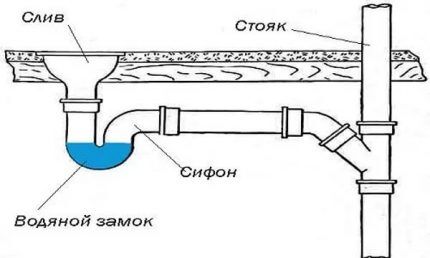
The water barrier is constantly in the siphon. If you do not use a device (kitchen sink or toilet) for a long time, the water will evaporate and eventually appear. unpleasant sewer smell in the bathroom or kitchen.
The same thing will happen when you flush for the first time after a long absence. But with constant use, the volume of water in the water seal is constantly updated, which prevents stagnation and, accordingly, the appearance of an unpleasant “aroma”.
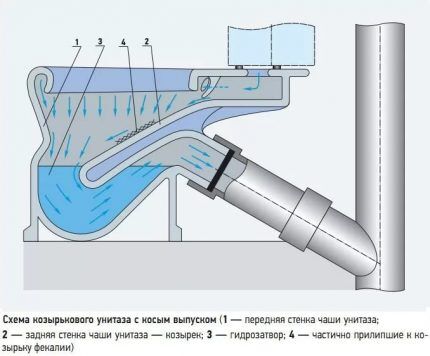
All sewerage devices are interconnected. For example, the right organization fan boner prevents the valve from breaking - a phenomenon when water does not linger in the water seal, but immediately goes into the pipe. In this case, the plumbing fixture loses its protective barrier, and unpleasant odors come outside - directly into the apartment.
Types of hydraulic valves for sewerage
The classification of devices is made taking into account several factors, but the main ones are design features. Based on the technical nuances, we can distinguish six main types of water seals; let’s look at each of them in more detail.
#1: Features of the knee modification
A knee water seal can be identified by its appearance - it resembles the letter U. The advantage of this type is its strength, which allows it to withstand maximum pressure in the pipes. The throughput of the device depends on the cross-section of the pipe, which should not be less than the output of the plumbing equipment.
The main places in the sewer system where it is appropriate to install knee water seals are: bath plums and toilet. Sometimes, instead of one, two siphons are connected.
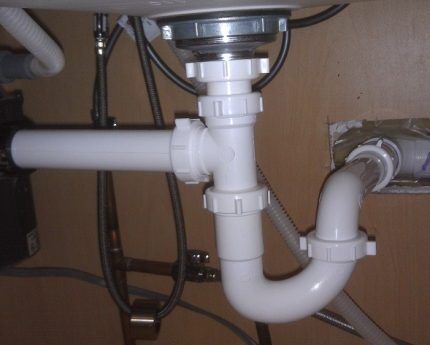
There are different types of knee siphons. Some of them are a single plastic device that cannot be adjusted. If it breaks, it must be dismantled entirely.
Other devices consist of several parts, so if necessary, you can increase the length of the pipes and change their position in order to adjust the volume of water. The position of the pipes is fixed with overhead plastic clamps and nuts.
The knee has two bends - at the entrance and at the exit. The point of the second inflection should be slightly lower than the point of the first (5-6 cm). Sometimes an S-shaped design is used for a more secure lock; its operating principle is the same.
Cleaning knee structures is done in two ways:
- by completely dismantling the device;
- special flexible cable.
Some polypropylene versions are equipped with an inlet for the drain hose of a washing machine or dishwasher.
#2: Benefits of a bottle device
This type of water seal is popular in kitchens for equipping drains under sinks for dishes. During the process of washing dishes and pots, some food waste enters the system, which can cause a blockage.
The design of the bottle model retains food residues, which helps maintain the performance of the sewer system. In addition, the bottle device retains its main purpose - to prevent the appearance of unpleasant odors in the home.
In addition to the pipes that form the basis of any water seal, this type is equipped with an additional element - a “bottle”. This is a kind of container for collecting food waste. The sump is located below the level of the drain pipe, so it is easy to get to it if necessary.
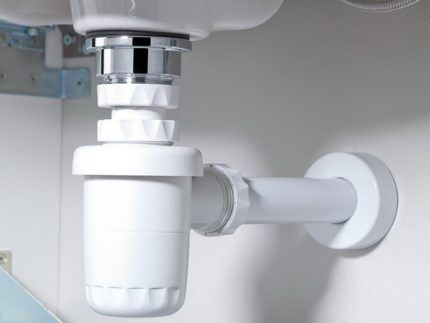
The bottle device is made of polypropylene, but is considered weaker in strength than its knee counterpart. The fact is that unreliable connections cannot withstand strong water pressure, so this type is used exclusively in the kitchen and is absolutely not suitable for equipping a toilet or bathroom.
A blockage in the water seal occurs when a dense mass of food debris completely clogs the sump and blocks the path of water. Thanks to the bottle configuration, clearing the blockage is very easy.
It is enough to unscrew the cap nut that attaches to the sump and shake out the accumulated debris from it. Then you need to put the “bottle” in place and tighten the nut more tightly, otherwise water may leak out.
Bottle structures are also useful in terms of preserving items that accidentally fall into the drain. Careless housewives often took their rings out of the settling tanks, slipping off their fingers while washing dishes with soap.
#3: Double-turn water seal device
The design of a double-turn hydraulic seal resembles a knee valve, but has a more complex configuration. The drain pipe is connected to the outlet of the plumbing fixture, and at the junction it is equipped with a filter grid to retain waste, hair and other debris.
Then it smoothly turns into an elbow, which ends with a connection to another pipe. The last element is directed towards the drain and is at a slight angle.

Household double-turn structures were previously made of cast iron, now they are made of polypropylene. Cast iron analogues can only be used in industrial enterprises with increased volumes of wastewater and high pressure in pipes. Chrome-plated parts, which are similar in technical characteristics to polypropylene, look more presentable.
If we compare this model with a bottle alternative, the second option is easier to maintain. However, the double-turn device is more reliable in terms of protection against leakage and, thanks to its simple adjustable design, can be installed even in narrow spaces.
#4: Corrugated model – pros and cons
Among the propylene modifications, there are also corrugated models - durable, flexible, sometimes simply necessary for arranging a sewer system in small spaces. Due to the plasticity of the pipe, corrugated pipes are placed in places where it is difficult to place other types of structures.
It can be rotated at the desired angle and directed in any direction, whereas firmly fixed plastic has only a few position options.
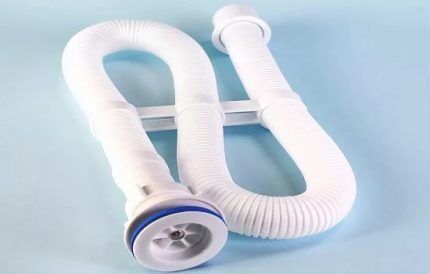
However, when choosing a corrugated option, you should be aware of its only, but significant, drawback. The ribbed walls of the pipe seem to be designed to collect debris: food debris, hair, pieces of soap, sand and other dirt get stuck in them. Taking this into account, when installing the corrugation, the drain must be equipped with a filter in the form of a fine mesh grid.
If you do not clean the corrugated water seal for a long time, under the influence of dirt and excess weight it loses strength and elasticity. Over time, the folds wear out, begin to crack and let water through.
After installing a flexible siphon, be sure to monitor its condition and clean it in a timely manner. You can guess that the pipe is dirty by the sagging that forms in places where grease and debris accumulate.
#5: How the overflow works
Another type of siphon - with an overflow - can also be placed in a separate category, since it is necessarily equipped with an additional pipe. The main purpose of the overflow equipment is to protect the apartment from flooding if for some reason the water stops going down the drain when the tap is open.
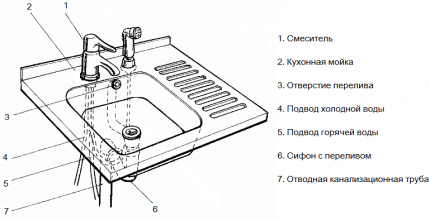
Bathtubs must be equipped with an overflow system. This method prevents flooding, but, unfortunately, does not contribute to savings. If you want to run a bath and forget to turn off the tap in time, the water, having reached the overflow level, will safely leave the container and go down the drain - along with your money for paying for utilities.
The market offers both economical plastic options and more durable but less elastic metal models. The disadvantages of brass-bronze equipment are the complexity of installation and high cost.
When choosing a device, do not forget to inquire about its throughput. If the overflow cannot cope with the volume of excess liquid, it is useless and even dangerous.
#6: Dry seal design
The design of the so-called “dry” valve is radically different from its hydraulic counterparts.It works on the “nipple” principle and is a threaded pipe with a check valve installed inside. As a result, water entering the device cannot flow back out, just as the smell does not have a chance to leave the pipe.
The installation of such devices is justified on the lower floors of multi-storey buildings, as well as in places where water is used less frequently (in bathhouses).
Dry valves are generally not installed in kitchen sinks, the use of which is highly likely to create blockages. But such devices with water seal work efficiently and last a long time in DIY shower stalls.

There are several types of dry devices:
- membrane, overlapping after draining the water with an elastic membrane;
- pendulum, tending to close instantly if no liquid is supplied;
- float valves that close the hole when water leaves the drain (acting like the fittings of a flush tank).
The latter are often made independently, arranging sewer lines in bathhouses.
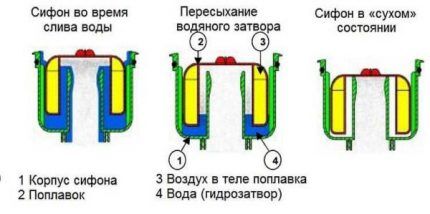
If the sewer lines suddenly dry out due to infrequent use, thanks to the dry seal, the unpleasant smell will not bother you.
Guidelines for choosing a water seal
If you are installing or replacing plumbing fixtures (bathtub, sink or toilet), you will definitely need a siphon.
To select a device that fully complies with plumbing, it is necessary to take into account a number of factors, including:
- dimensions of the assembled device;
- siphon type;
- the material from which the pipes and fasteners are made;
- number of drains or additional connections;
- protection against blockages;
- diameter of inlet and outlet;
- presence or absence of overflow.
Suppose the most suitable option for a kitchen sink is a bottle model that traps food particles. You can also use a knee device, but then all the waste will flow into the sewer pipe, and over time there is a risk of blockage.
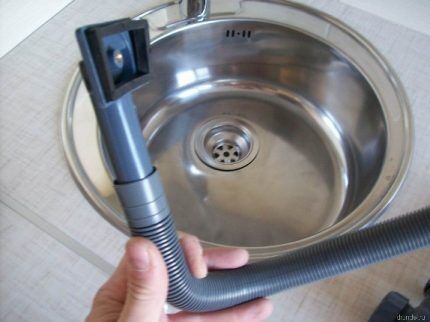
If the project involves installing a sink or washbasin with two sinks, a device with two drain points will be useful. Its operating principle is the same, the only difference is in the design.
Before purchasing, be sure to measure the size of the space where the installation will take place. It happens that the siphon simply does not fit in the allotted space (this is especially true for the close gap between the bathroom and the floor). If you choose the right water seal, there will be much fewer problems with its installation and repair.
If the water seal from the siphon is pulled into the sewer, the system is modernized by installing vacuum valve:
Installation instructions for automatic siphon
Installing a hydraulic bottle seal under a kitchen sink is quite simple, but under a bathtub is a little more difficult due to the inconvenient location of the drain system. We present instructions for installing an automatic siphon for the bathroom - an advanced device that you can install yourself.
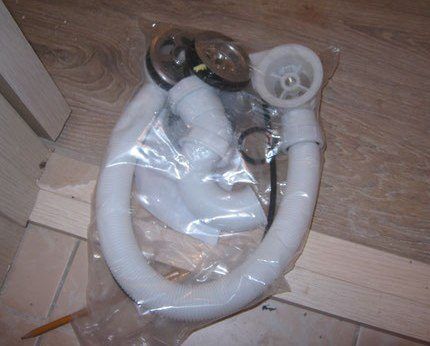
First, we will equip the overflow hole. To do this, take the elastic gasket that comes with the kit and insert it into the hole on the wall of the bathtub. For a tighter connection, you can use silicone sealant.
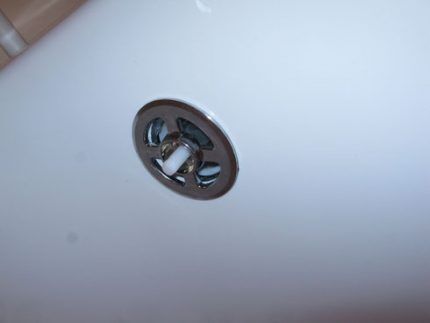
Then we take the next part - the lamb - and try to carefully secure it to the rod with a bolt.This will require a small flathead screwdriver that can fit through the small hole in the side of the wing.
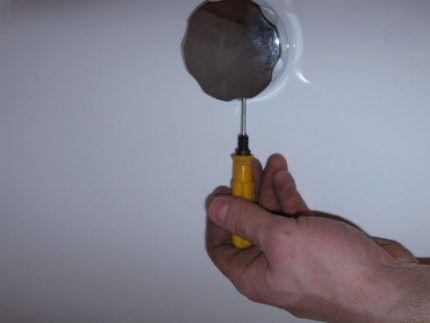
Next, we move to the lower part and take fittings to design the drain hole.

Among the fasteners we find a long mounting screw, which is responsible for fixing the siphon, and screw it in from the top side, holding the structure from below.

All that remains is to screw on the water seal element. First, we string a rubber gasket onto the plastic outlet of the drain, then insert the knee valve. Tighten the outer plastic nut - the structure is ready.
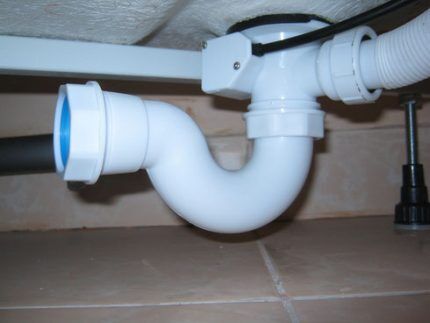
Lastly, we attach a polypropylene pipe (straight or corrugated) to the water seal, leading to the sewer pipe.
We test the system - pour a full bath of water and check the operation of the overflow and drain hole. Let's see if there are any leaks. If we find a leak, we tighten the nuts more tightly and coat the joints with sealant, but on the condition that they do not have to be opened in the future to clear the blockage.
Detailed sequence of work and rules installing a siphon under the bath will familiarize you with the article, the contents of which we recommend that you familiarize yourself with.
Conclusions and useful video on the topic
To ensure that the installation process goes smoothly and without the errors that plague amateur home plumbers, we suggest watching useful videos.
Video #1. The best option for equipping a kitchen sink:
Video #2. Installation of a siphon when installing a bath:
Installing a sewer siphon is a process that even a novice in plumbing can handle. If you correctly decide on the type of water seal and carefully study the instructions, all that remains is to screw on a few parts. Work for half an hour - and a comfortable environment in the house and the absence of an unpleasant odor - for years.
Please write comments in the block below. We and site visitors are interested in your stories, advice, and short photo reports about installing siphons with your own hands. Ask questions about controversial issues that you may find in the article.

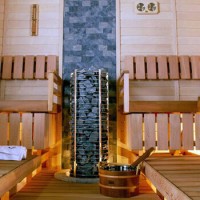
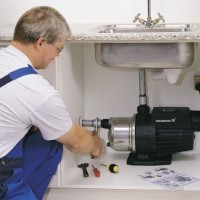
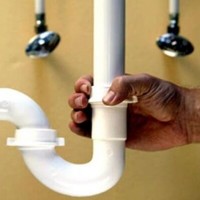
At one point, there was a terrible smell coming from the kitchen sink. I noticed that this only happens when there is a certain direction of the wind outside. I decided to consult a friend who is a plumber, and he told me that the problem might be in the water seal. He said it was time to change my siphon to something newer. There are enough to choose from. We changed everything in a couple of minutes and ventilated the room well, now everything is fine.
I have a similar problem - the water seal breaks regularly and there is a terrible sewage smell in the bathroom. Moreover, several times there was a release of sewage fluid into the bathtub.I come home from work and there is a stench and dried scraps.
I called a mechanic from the management company, but he didn’t care. Almost kicked him into checking the ventilation of the riser, but to no avail. He says: “everything is fine there.” Unfortunately, I don’t know good plumbers with whom I could consult. Will simply replacing the water seal help in my situation or do I need to do something more serious, for example a vacuum valve?
In your case, mistakes were clearly made when installing the water seal, since it should work accurately to prevent sewage discharges into the bathroom. If you are confident in the correct installation, then we look for the source of the problem in the ventilation of the sewer riser, ask the management specialist who checks for written confirmation that everything is normal with the ventilation. It is possible that in this case he will no longer be 100% sure! Checked personally.
Further. The blockage may be higher up the riser, which is logical since the water seal fails. It can also be solved by calling specialists who must conduct an inspection and remove the blockage.
I can also recommend a life hack: install another water seal using two 45° angles and one 90° angle, 45-90-45. This solution should help prevent the water seal from breaking.
I want to say something about the corrugated model. I did some repairs at a friend's place a year ago and they installed just such a device. So, recently he told me that it was clogged, and when cleaning it, it started leaking. If you decide to install corrugation, then you should choose a higher quality material, and be prepared for the fact that you will have to periodically clean the valves.I recommend using liquids for cleaning and prevention.
But it’s very easy to make without corrugation, these sewer pipes are like a cool construction set, they don’t require any serious skills, nothing! Just wet the rubber bands and insert one into the other!